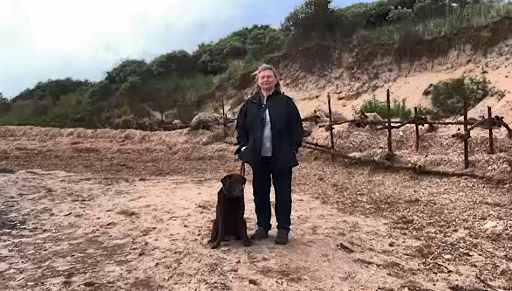2 Taking action
In Worden’s model taking action is part of tasks 3 and 4 – re-adjusting to the reality and re-investing emotional energy. You will need to ask yourself, what does it mean now that I know this? This readjustment happens over an extended period, and may require several different types of adjustment; internal, external, spiritual, practical and emotional. We may make changes to our behaviours, friendship groups and so on. This can present us with a conflict. We may feel scared of change. We may not want to change. There is often a struggle to let go of the old to allow the new.
Worry and anxiety about the climate and ecological emergency has been identified as a positive motivation for engaging in activism (Ojala et al., 2021) and – reciprocally – activism has been suggested as a way to cope with feelings of eco-distress as well as adapting and adjusting to a new way of living (Clayton, 2020; Lawrance et al., 2022). Studies in various parts of the world have shown that taking some kind of action to mitigate the climate crisis can help with feelings of eco-distress.
Many of these studies have focussed on children and young people because eco-distress is particularly common in this group (Hickman et al. 2021).
This quote from a young climate activist sums up how activism has helped her:
I’m involved in activism because it gives you a real sense of power, it feels like you are actually doing something that will help. It’s so easy to feel powerless and overwhelmed by the many problems the world is facing and activism is a kind of a relief for that.
This sense of relief in taking action is an important factor in managing eco-anxiety. Taking action can help us to adapt to living with the climate crisis, to adjust to a new world reality, and in so doing improve our sense of wellbeing. Taking action is a form of problem solving and helps with feelings of powerlessness by connecting us to our agency. In turn, this can lead to a sense of purpose or meaning, improving life satisfaction (Ojala, 2012) and increasing hopefulness (Macy and Johnstone, 2012). These positive emotions can help us to bear the distress we may feel when we think about the climate crisis. Social support and relationships gained through engaging in activism can build emotional resilience and can be a protective factor against low wellbeing (Ojala et al., 2021).
It is important that we do not confuse ‘taking action’ with ‘activism’ though. Taking action need not necessarily mean joining activist movements such as Extinction Rebellion or becoming involved in large-scale protests.
It has been shown that engaging in individual pro-environmental behaviours, such as cycling rather than driving or buying fewer clothes, can benefit mental wellbeing while at the same time benefitting the environment (Lawrance et al., 2022). Although small actions matter, we know that on their own they will not solve the problem. Corporations and governments have more power to make the big changes necessary to limit the climate and ecological crisis. For this reason, it has been argued that citizen activism is the most effective way of bringing about change through pressure on governments and organisations (Ockwell et al., 2009).
Think about the big social changes in history, such as how women got the right to vote, gay marriage became legal and South African apartheid ended. It was ordinary people who decided the world had to be different and they used their voices through citizen activism to press for change. However, the slogan ‘the personal is political’ points towards an expanded idea of what citizen action involves. Fighting inaction on the climate and ecological crisis and social injustices requires the individual to take responsibility for their own behaviour. As you learned in Week 1, it is not either/or individual or social change that needs to happen, but that both are necessary and that there are continuous interactions between them.
Activity 3 Activism and protests
Watch the video clip of an Extinction Rebellion protestor and answer the question below.

Transcript
There are many positive reasons to become engaged in action of some kind, but what potential difficulties might arise for people who become engaged with more overt activism and protests about the climate crisis?
There are words of caution about seeing action merely as a cure for eco-distress (Hickman, 2020). By seeing activism as a means of alleviating distress it reinforces the notion of eco-distress as a pathology to be cured – remember the discussion about this in Week 2. It also risks disillusionment and disappointment if the action lacks positive outcomes, and may worsen mental wellbeing for people who are severely distressed (Clayton, 2020).
Those who are severely distressed by climate anxiety and cannot control or rid themselves from anxious and negative thoughts may need help to gain some distance from the topic. For example, by reducing their attention to media coverage, focusing on more immediate issues, and finding alternative sources of activity and meaning.
